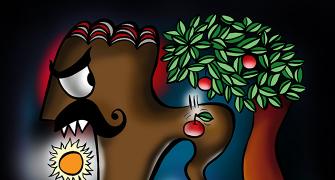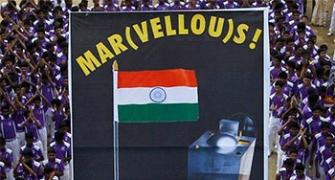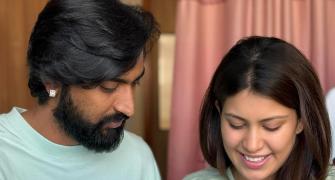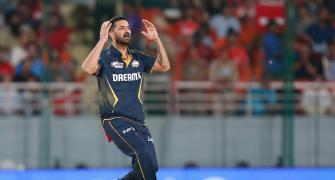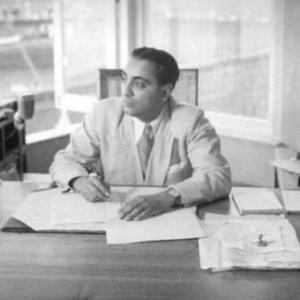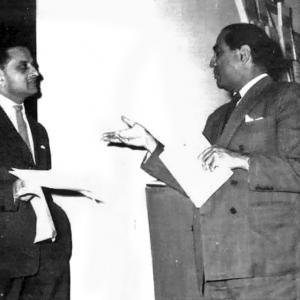I suggest we build a Vigyan Mandir (Temple of Science) with the ambience of a place of worship, so that it becomes a destination for pilgrims.
We should embed on its walls bronze plaques describing each scientist mentioned here along with about a dozen of our ancient mathematicians, recommends Professor Kalyan Singhal, historian of science and technology.

Outstanding scientific contributions have shaped our history and our future. By recognising these contributions, the Government of India brings them to the attention of the general public and of future generations.
Unfortunately, there have been some glaring oversights. For example, Dr Homi J Bhabha, the pioneer of India's nuclear programme, was never awarded the Bharat Ratna. Not even the Padma Vibhushan although several of his mentees have been so honored!
In this article, the term science includes natural sciences, mathematics, engineering sciences, economic sciences, and management sciences.
I propose that it is past time to honour at least 42 scientists born after 1856.
Five of them -- the late A P J Abdul Kalam, the late C V Raman, the late M Visvesvaraya, and two living scientists -- have been honored with the Bharat Ratna.
Furthermore, 28 scientists listed below deserve to be honored posthumously. With their names, I have noted whether they have received a Padma award.
I suggest that we build a Vigyan Mandir (Temple of Science) with the ambience of a place of worship, so that it becomes a destination for pilgrims.
We should embed on its walls bronze plaques describing each scientist mentioned here along with about a dozen of our ancient mathematicians.
We should publish a booklet on India's rich history of scientific and technological achievement to coincide with the inauguration of the Vigyan Mandir.
Ancient India invented the zero, algebra, and trigonometry. She pioneered experimental science in developing dyes for cotton manufacturing, identifying particular times of day for the ideal temperature and humidity for manufacturing muslin, and inventing steel (then called wootz) and refining its quality to an extraordinary extent.
On August 15 of this year, the concluding day of our celebration of 75 years of Independence, we should honour people like Dr Bhabha and Srinivasa Ramanujan with the Bharat Ratna and the scientists in the list below with the Padma Vibhushan if they have not already been so honored.
Anil Kumar Agarwal (1947-2002)
(Conferred Padma Bhushan)

An environmental scientist, came up with the great insight that water harvesting systems were the key to India's economic and social development, natural resources management, population control, and gender equality. He cited Kerala and Sri Lanka as examples.
Homi J Bhabha (1909-1966)
(Conferred Padma Bhushan)
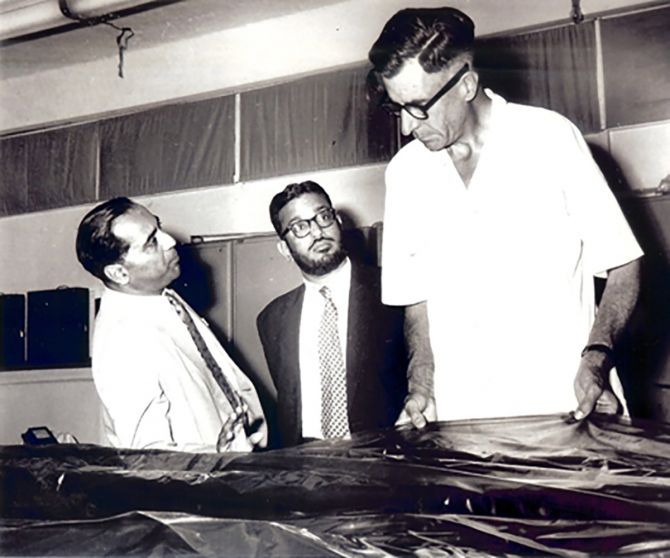
The founder of the Indian nuclear programme, served as the first chairman of the Atomic Energy Commission of India.
In the 1930s, he was part of the European network of scientists that included more than a dozen future Nobel Laureates and developed modern nuclear science.
His scientific contributions included what is known as Bhabha Scattering.
Shanti Swaroop Bhatnagar (1894-1955)
(Conferred Padma Bhushan)

Served as the first director-general of the Council of Scientific and Industrial Research.
He improved the procedure for drilling crude oil and developed the process for converting sugarcane peelings into food-cake for cattle.
Norman E Borlaug (1914-2009)
(Nobel Laureate, Conferred Padma Vibhushan)

Born of Norwegian immigrants to the United States.
When the British began their occupation of India in 1757, about half of her agricultural output was surplus, yet when they departed in 1947, about a third of her population was near starvation and another third suffering from malnutrition.
Borlaug led India's Green Revolution that doubled wheat yields and began to repair this harm.
Jagadish Chandra Bose (1858-1937)
Invented the crescograph to measure plant responses to various stimuli, proving that a parallel existed between animal and plant tissues.
S N Bose, P C Mahalanobis, and Meghnad Saha, who are on this list, were his students.
Satyendra Nath Bose (1894-1974)
(Conferred Padma Vibhushan)
Corresponded with Albert Einstein to develop the Bose-Einstein Statistics.
The elementary particles Bosons are named after him. He also had interests in mineralogy, philosophy, arts, and music.
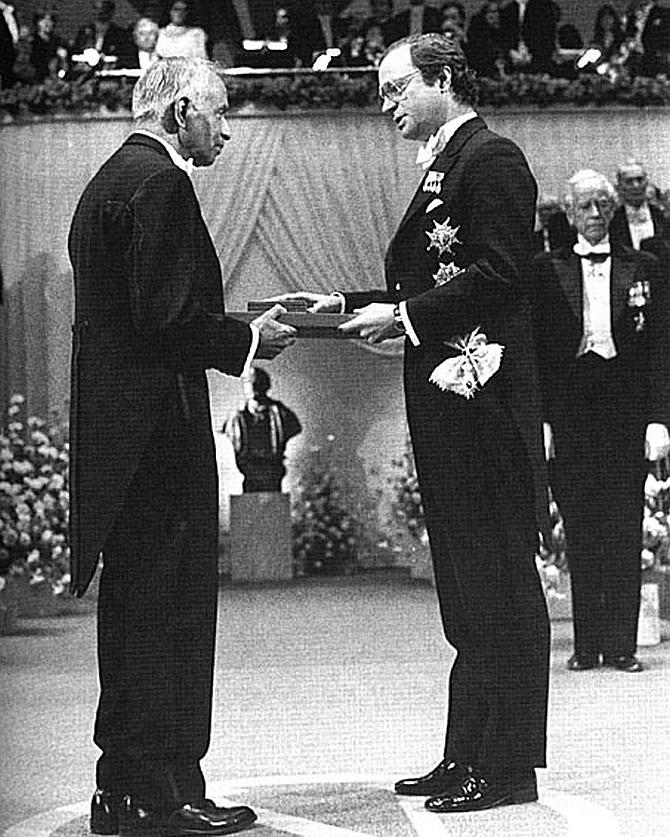
Subrahmanyan Chandrasekhar (1910-1995)
(Nobel Laureate, Conferred Padma Vibhushan)
Worked on the structure and evolution of stars and black holes.
The Chandrasekhar Limit and the Chandra X-Ray Observatory are named for him.
Satish Dhawan (1920-2002)
(Conferred Padma Vibhushan)

Served as chairman of the Indian Space Research Organisation (ISRO).
He led the development of the telecommunications satellite INSAT and the Polar Satellite Launch Vehicle, placing India among leading spacefaring nations.
Coluthur Gopalan (1918-2019)
(Conferred Padma Bhushan)

A pioneer of nutrition research in India and the midday meal scheme for school children, served as director of Indian Council of Medical Research and contributed to goiter prevention.
He identified the Grierson-Gopalan syndrome which causes severe burning and aching of the feet.
Padmanabhan K Iyengar (1931-2011)
(Conferred Padma Bhushan)
Served as the fourth director of the Bhabha Atomic Research Centre and chairman of the Nuclear Power Corporation of India.
His work was key to the development of India's first nuclear device, tested in 1974.
Narayan R Kamath (1914-1983)

A chemical engineering scientist, advocated the use of scientific research to develop India's resources with a focus on low-energy consumption rather than importing materials from the West.
As deputy director of IIT-Bombay, he pioneered the design of the IITs' Joint Entrance Examination in 1963.
Har Gobind Khorana (1922-2011)
(Nobel Laureate, Conferred Padma Vibhushan)
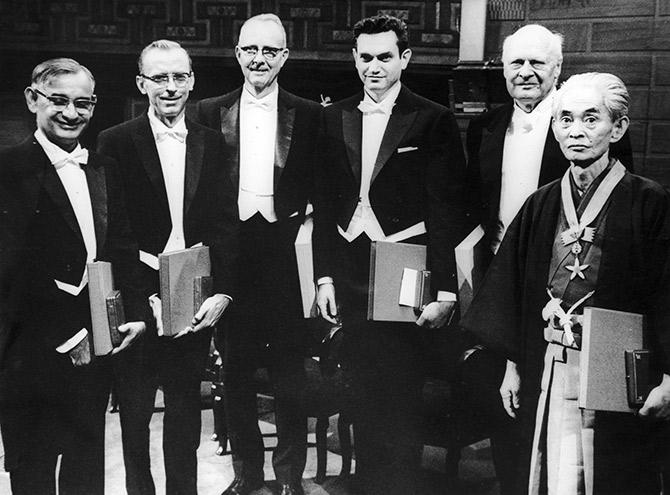
Was awarded the Nobel Prize for Physiology or Medicine for his research on the order of nucleotides in nucleic acids.
J C Kumarappa (1892-1960)
Argued for the efficacy of small-scale dam and irrigation projects, the use of organic manure, and the management of forests in service of water conservation.
He was the founder of modern environmentalism in India.
Prasanta Chandra Mahalanobis (1893-1972)
(Conferred Padma Vibhushan)

Founded the Indian Statistical Institute.
His contributions include large-scale sample surveys and pioneering studies in anthropometry in India.
He played an influential role in India's planning for agriculture and industry.
M G K Menon (1928-2016)
(Conferred Padma Vibhushan)

Undertook deep underground experiments with cosmic ray neutrinos in the mines at Kolar Gold Fields.
He served as chairman of the ISRO.
Basanti Dulal Nagchaudhuri (1917-2006)
(Conferred Padma Vibhushan)

A physicist, built India's first cyclotron at the University of Kolkata.
His work laid the foundation of the Integrated Guided Missile Development Programme.
Vulimiri Ramalingaswami (1921-2001)
(Conferred Padma Vibhushan)

Did pioneering research on vitamin deficiencies, protein malnutrition, goiter, and hepatitis.
He served as director general of the Indian Council of Medical Research.
Raja Ramanna (1925-2004)
(Conferred Padma Vibhushan)

Served as the fourth chairman of the Atomic Energy Commission of India.
He founded the Raja Ramanna Centre for Advanced Technology, Indore.
Srinivasa Ramanujan (1887-1920)

Is widely regarded as the greatest mathematician who ever lived, or as one of the three greatest mathematicians, along with Leonhard Euler and Isaac Newton.
With no substantial formal training, he made breathtaking contributions to number theory, mathematical analysis, continued fractions, and infinite series.
N. Srinivasa Ramaswamy (1926-2012)
(Conferred Padma Bhushan)
Was the founding director of IIM-Bangalore.
He promoted public sector management, development of the non-organized sector, and technology for the poor, including the bullock cart.
V K R V Rao (1908-1991)
(Conferred Padma Vibhushan)

Established the Delhi School of Economics, the Institute of Economic Growth, and the Institute for Social and Economic Change.
He was the first to estimate India's national income (before Independence), and he set up the system of collection of national accounts.
Amulya K N Reddy (1930-2006)

An electrochemist, founded at the Indian Institute of Science what is now called the Centre for Sustainable Technologies.
He, Thomas Johansson, José Goldemberg, and Robert Williams -- scientists from four continents working at the UN-- established that for the environment and the health of the cook, gaseous fuels were far superior to liquid fuels which were far superior to solid fuels.
Ronald Ross (1857-1932)
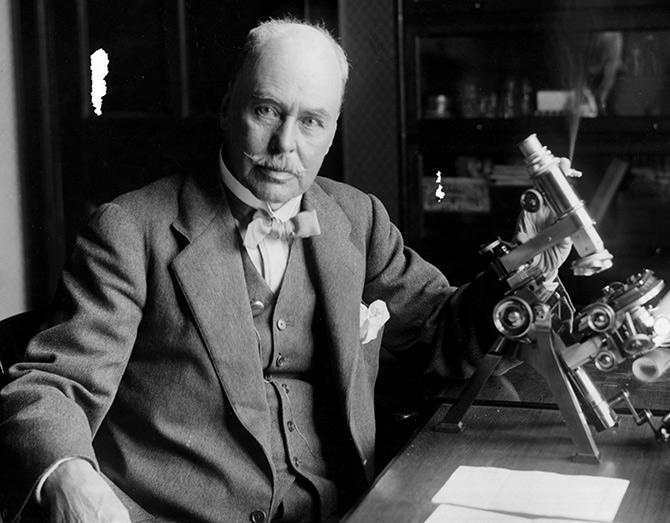
The forgotten first 'Indian' Nobel laureate, born in Almora to British parents, did his research on malaria in India.
He was awarded the Nobel Prize for Physiology or Medicine in 1902 for discovering the malaria parasite in the gastrointestinal tract of a mosquito and thus proving that malaria was transmitted by mosquitoes.
His discovery laid the foundation for preventing the disease.
Meghnad Saha (1893-1956)

Accurately related the spectral classes of stars to their actual temperature.
He founded the National Academy of Sciences, India in 1930.
A vocal critic of the Gandhian economics, Saha was an influential supporter of heavy industry after independence.
Vikram A Sarabhai (1919-1971)
(Conferred Padma Vibhushan)

Was the founder of the Indian space programme.
He served as the second chairman of the Atomic Energy Commission of India.
He founded the Physical Research Laboratory.
Homi N Sethna (1923-2010)
(Conferred Padma Vibhushan)
Served as the third chairman of the Atomic Energy Commission of India.
He also led the design team for India's first nuclear reactor Apsara and was the central figure in India's civilian nuclear programme.
Obaid Siddiqi (1932-2013)
(Conferred Padma Vibhushan)
A researcher in behavioural neurogenetics, was the founding director of the TIFR's National Centre for Biological Sciences in Bengaluru.
He was elected as a member of the US National Academy of Sciences.
Deen Dayal Upadhyay (1916-1968)
Head of the Jan Sangh party (precursor of BJP) from 1953 to 1968, used party manifestos to advocate guaranteed employment for all, universal basic income (30,000 rupees per month per family, adjusted to the present per capita GDP), an upper limit to family incomes, free medical aid for all, elimination of the distinction between the state and private schools, home ownership for every family, land to the tiller, and a focus on small scale industries and irrigation.
He opposed Nehru's emphasis on heavy industries and large dams.
At least nine other outstanding Indian scientists over 84 should be honored in the Vigyan Mandir.
The nine are: Jagdish Bhagwati, Rajagopala Chidambaram, J V Narlikar, C R Rao, Nilakanth Rath, Raj Reddy, M M Sharma, M R Srinivasan, and M S Swaminathan.
Rath, the first economic scientist to study poverty, has never been honoUred by the Government of India; Raj Reddy has been honored with the Padma Bhushan; and the others with the Padma Vibhushan.
If an enterprising author wrote a book of profiles on the 42 scientists mentioned here, it would surely inspire all Indians, and particularly students at every level.
I cannot say if this article will ever reach Prime Minister Modi, but its very publication accomplishes my goal by bringing to the public's attention some of our outstanding scientists and their breathtaking contributions.
I hope that this article contains some information that will surprise and intrigue each reader. I welcome readers' feedback.
Dr Dan Mayur and Dr Papiya Sengupta Nandy, my college classmates and friends for over 50 years, contributed to this article. My literary ally Ms Molly Haight edited it.
Copyright© Kalyan Singhal. Any publication is free to reprint this article in any language after informing the author at Ksinghal@ubalt.edu
Kalyan Singhal is an engineering and economics scientist and a historian of science and technology.
He is a 1967 graduate of IIT-Bombay at Mumbai; a former professor at IIM-Bangalore; a Fellow of INFORMS, along with several Nobel Laureates; lifetime editor of Production and Operations Management; lifetime co-editor of Management and Business Review.
He can be reached at Ksinghal@ubalt.edu
Photographs curated by Manisha Kotian/Rediff.com
Feature Presentation: Ashish Narsale/Rediff.com


